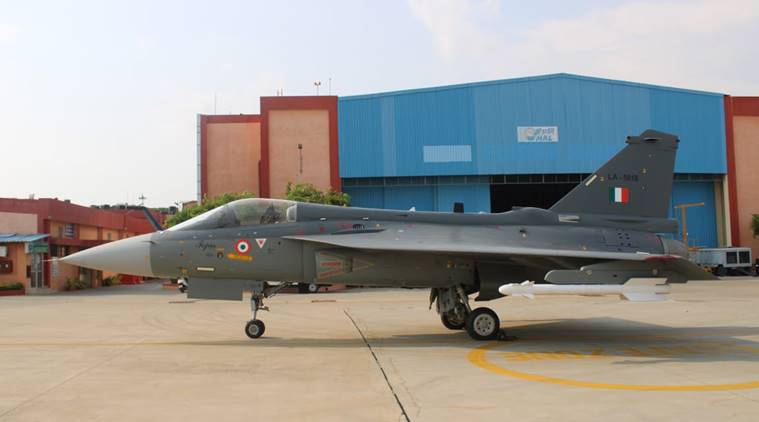
The Indian Express
IAF operationalises no.18 Squadron, equips it with LCA Tejas
The No 18 Squadron, formed in 1965 with the motto "Teevra aur Nirbhaya" meaning "Swift and Fearless," "actively participated" in the 1971 war with Pakistan and had earned the sobriquet "Defenders of Kashmir Valley" by being the first to land and operate from Srinagar. The Squadron was "resurrected" on April 1 this year at Sulur.
by PTIThe Indian Air Force on Wednesday inducted the first Light Combat Aircraft (LCA) Tejas FOC (Final Operational Clearance) standard and operationalised its Squadron 18 “Flying Bullets” at the Air Force Station at Sulur in the city’s outskirts.
An Inter faith prayer was performed before induction of Tejas Mk-1, manufactured by Hindustan Aeronautical Ltd, Bengaluru, whose Chairman and Managing Director, R Madhavan handed over its documents to Air Chief Marshal and Chief of Air Staff R K S Bhaduauria. A coconut was also broken to mark the induction of Tejas today.
Bhadauria handed over a representational key of the first LCA Tejas Mk-1 FOC fighter to Group Captain Manish Tolani, Commanding Officer of No. 18 Squadron at the Air Force Station, Sulur. Earlier, Bhaduria flew a sortie on an Initial Clearance Operation (IOC) aircraft from the 45 Squadron Flying Daggers.
Tejas is an indigenous fourth generation tailless compound delta wing aircraft. The No.18 Squadron will be the second one to have the home-made Tejas, after the 45 Squadron based here.
The aircraft is equipped with fly-by-wire flight control system, integrated digital avionics and multi-mode radar, while its structure is made of composite material. It is the lightest and smallest in its group of fourth generation supersonic combat aircraft.
The No 18 Squadron, formed in 1965 with the motto “Teevra aur Nirbhaya” meaning “Swift and Fearless,” was earlier flying MiG 27 aircraft. The Squadron “actively participated” in the 1971 war with Pakistan and had earned the sobriquet “Defenders of Kashmir Valley” by being the first to land and operate from Srinagar. The Squadron was “resurrected” on April 1 this year at Sulur.
In his address, Bhaduaria urged the industry to work together to fulfill the requirements of IAF. Lauding the scientists and others behind the designing and manufacture of the new version, he said this model of Tejas was the best in this class in the world now. The FOC variant has air-to-air refuelling facility, close combat gun, updated avionics and flight control software among others, he said.
Though there was a delay in handing over the aircraft due to the COVID-19 situation, it was now the responsibility of Airmen to make use of it, he said, adding, there was a requirement of 83 LCA to IAF.
Madhavan said that HAL will be delivering 16 Tejas FOC to the IAF in another 36 months, even as the production of four FOC aircraft was in the advanced stage. IAF has placed an order for 20 IOC standard aircraft and 20 FOC standard aircraft, the HAL chief said.
Among others, the FOC variant will reduce the maintenance man hours and turn around time, resilting in enhanced support for IAF missions. Its features include additional drop tanks and BVR missile capabaility.
Meanwhile, Bhadauria flew a Tejas single-seater LCA at the Sulur air force station. Officials said Bhadauria, who worked with the team that developed the Tejas jet, flew the aircraft which is part of the IAF’s 45 Squadron.
The Tejas has been developed by the Aeronautical Development Agency and the HAL. The lifespan of the jet would be a minimum of 30 years just like any other front-line combat aircraft. Combat jets are classified under various generations depending on their avionics, capability and weapons systems.
The current fleet of fighter jets with the IAF range from three-and-half generation to the fourth generation.